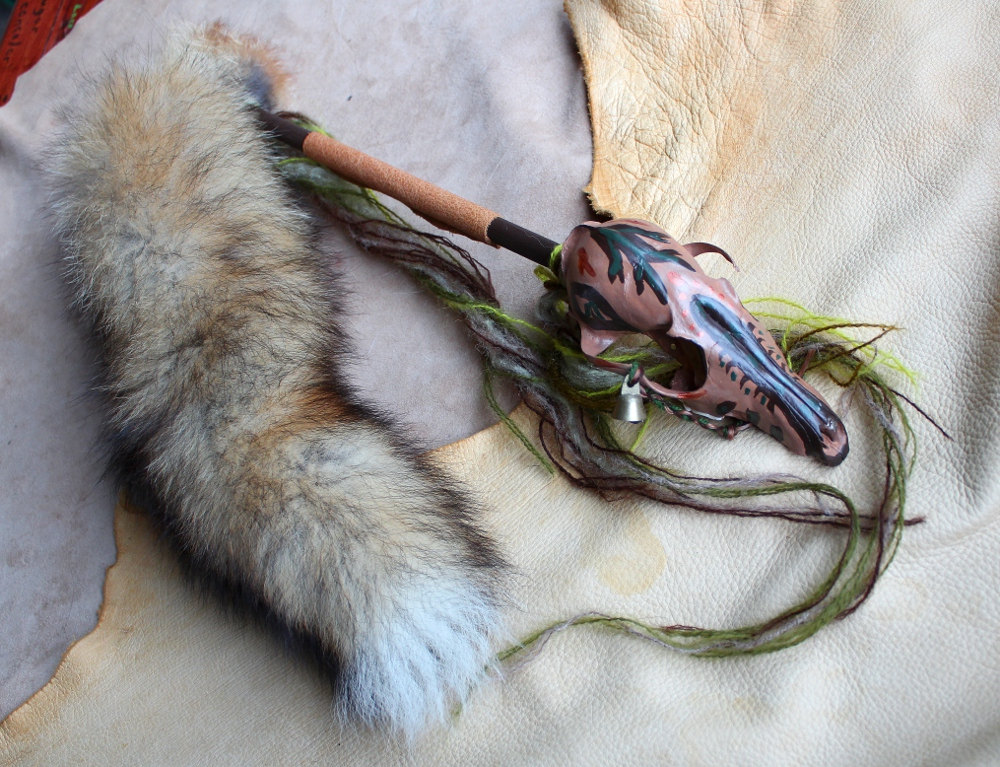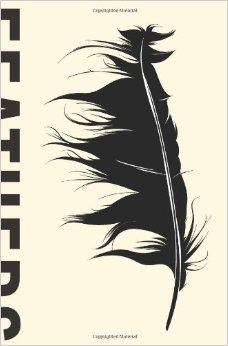My artwork and other practices with hides, bones and other animal remains have always been intensely spiritual. I didn’t like seeing them displayed as mere trophies or status symbols, and so set out to remake them as sacred creations and beloved personal artifacts, guides in costumed shapeshifting and curiosities for consideration. I wanted them to be revered, not merely possessed.
There are a lot of factors outside of my control in this. I can’t control who buys a particular item (other than turning away the occasional rude customer) or what they do with something I made once they have it. I’ve just had to learn to let go and let gods in that regard. But I can do my best to seek out my target audience and present my work in a way that will appeal to them, and keep working my intent into everything I create. And I add a bit of a ritual to it, too, whether you want to believe it changes things on a distinctly spiritual level, or simply helps me stay focused on my task.
I realized recently that while I reference the ritual I do quite a bit, I haven’t actually written about it much. So I figured now would be as good a time as any to share it with you in detail. You’re welcome to try it out for yourself, modify it as needed, but please do give credit when sharing.
There are three parts of the ritual: the meditation, the purification, and the offering.
The meditation is the part that takes the longest. I’ll sit with each piece that I’ve created, and meditate with the spirits of the animals whose remains are incorporated into the art. I have a conversation with them, and ask each of them to show me what they’d like me to know about their lives and deaths. Sometimes I get a vivid, play-by-play of their last moments; other times I get highlights of their lives, especially when they were young (even other animals like to reminisce about childhood). I’ve often gotten some of this information already; as I create the art I’m having an ongoing conversation with them about what I’m creating and what they’d like me to include, and it’s a good opportunity to chat with them about other things as well.
The purification involves a physical smudging of the completed artwork. I used to use sagebrush, but these days I tend more toward cedar or sweetgrass as I like the aroma better. I generally only use a tiny bit at one time; rather than burning an entire sage smudge stick, I’d just pull out one lone leaf and light it. Part of this is to keep from aggravating my asthma, but it’s also so I’m using fewer resources. One leaf purifies as well as thirty in my experience, even if it takes just a touch longer to smudge the entire piece. It’s really an issue of quality over quantity. Other forms of purification can work, too, though I recommend against water-based ones since water can hurt certain hides and other remains. I also say a prayer over each piece at this time, asking that they will go to someone who will love them and cherish them for who and what they are, and thanking them for letting me work with them in the first place.
The offering is the part that’s changed the most over the years. When I first got started, I would offer small drilled stones and shells to the totems of the animals whose remains I used. When I had enough to fill a small leather pouch dedicated to that totem, I would make the stones into a necklace, and then give it to someone who worked with that totem. Over time I became less enamored of this. What was I going to offer to the totems of the stones I made as offerings to the animals? After all, they’re a part of nature, too, not just objects to be given and taken. So I instead diverted the money I would have spent on the stones and shells toward donations to nonprofit groups, and increased my volunteer time to compensate as well.
No purification ritual goes exactly the same way as another. Sometimes the meditation is brief, other times it’s looooong. Occasionally I get a spirit making a special request for an offering or other gesture. That’s why I don’t have this all written out in one big “First say this, then do this” format. It’s more a set of guidelines than holy writ. The point is to remind myself that I am working with skin spirits and sacred remains, and that what I do is meant to honor.
Note: If you enjoyed this post, please consider bringing home a copy of my book Skin Spirits: The Spiritual and Magical Uses of Animal Parts, which details my years of spiritual work with hides, bones and other animal remains, along with step by step instructions on how to make assorted ritual tools with them.


